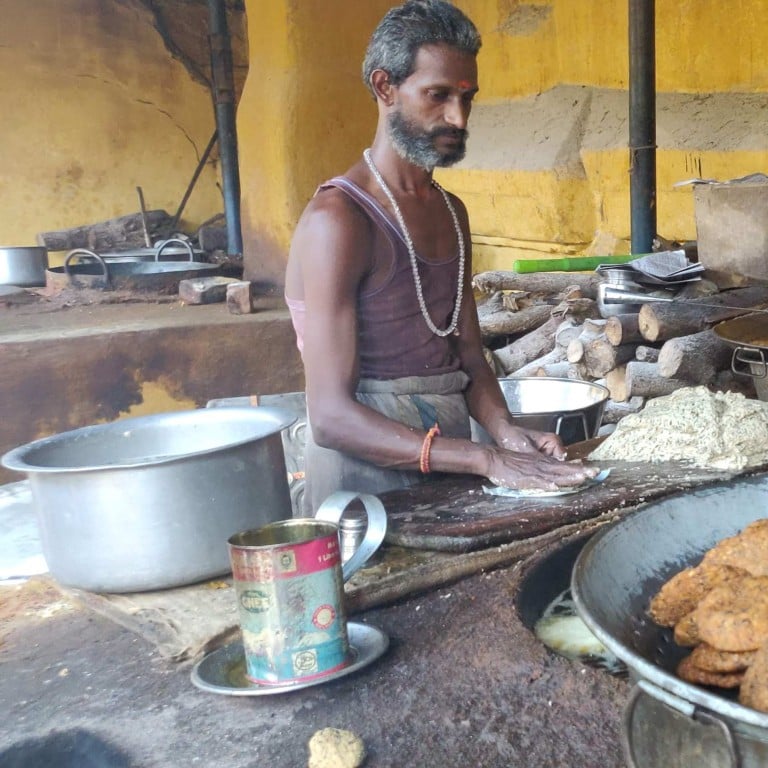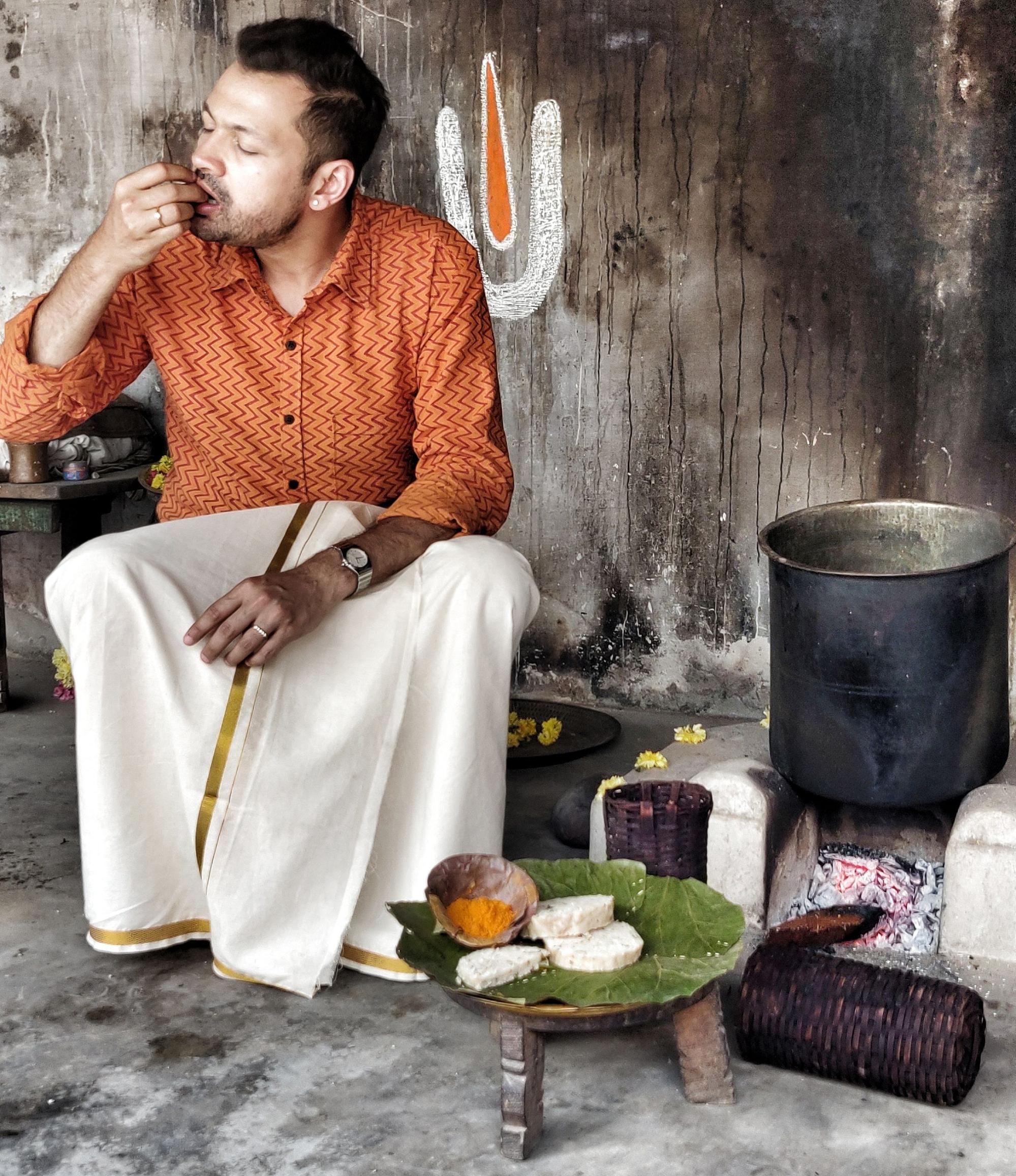
Fit for gods: how Indian saints and royals shaped 5,000 years of temple food
- Prasadam (temple food) is usually offered to deities before being fed to worshippers and temple volunteers
- Each temple cooks its own unique prasadam, which is determined by agriculture in the vicinity of the temple
Food historian Rakesh Raghunathan’s introduction to South Indian temple food, or prasadam, began with a song about an eighth century saint.
“I was singing a song about Andal, the South Indian poet saint, and she had spoken about a particular sweet akkara adisal in an ancient text. This is made of milk, rice and jaggery, and she promises to cook and offer 100 pots of this if she marries the Lord,” he said. “This set me off on the journey of delving into temple cuisine and documenting these age-old recipes.”
Till today, the Srivilliputhur Andal temple in Tamil Nadu dedicated to the poet saint continues to serve this milk and rice concoction as prasadam.

It is hard to overstate the significance of prasadam. A visit to many temples in South India always ends with food. There is usually a kitchen (madapalli) to cook food that is offered to the presiding deity, and then fed to worshippers and volunteers.
“Temple food is an intrinsic part of Indian culture,” said Anushruti, an Indian food writer and wellness consultant.
“Naivedyam, the offering of food to the deity before one eats, has been a Hindu tradition for thousands of years,” she added. “Offering food to the gods and eating the leftovers, points to the symbiosis between man and God, and food is supposed to be imbued with spiritual energy when this is done.”

Raghunathan’s desire to deepen his knowledge about prasadam and share the culture with others led him to start conducting temple food workshops across India.
He has travelled across the southern states of Tamil Nadu, Andhra Pradesh, Kerala, and Karnataka documenting heirloom recipes from home cooks and temples’ priests.
Raghunathan, who also hosts a food and travel TV show, also met other historians to unravel the culinary history embedded in the walls of temples.
Historians and temple priests have aided most of Raghunathan’s discoveries, by unearthing medieval epigraphs and transcribing temple inscriptions. Sangam literature, which documents the early history of the Tamil people as early as 300BC, has in-depth descriptions of temple food and cooking methods.

Many temples offer food based on Ayurvedic principles of six types of taste: sweet, sour, salty, bitter, pungent and astringent. Temple food is always sattvic, meaning it contains no meat, fish, onion or garlic, and is usually made of grains, vegetables, fruits and milk products.
“The food offered in South Indian temples is almost always cooked at the temple, unlike in North India where you can offer store-bought food,” said Raghunathan.
Temple kitchens usually have rigid rules about how much firewood to use, how to cook, and the material of cooking vessels like mud and bronze urns.
‘Melt-in-the-mouth goodness’: How an Indian temple town’s cuisine spread across the world
Seasonality and the local produce around a temple typically determined the type of food served in a temple. This includes jackfruit used in prasadam of temples in Kerala, and rice as a major part of most prasadam served in South Indian temples. Southern India is known as the rice belt of the country.
Tastes and preferences of royal families across India also influenced temple food, as the royals were the biggest patrons of temples.
Every temple has its unique prasadam. At the Kanchipuram Varadharaja Perumal temple in Tamil Nadu, prasadam is kanchipuram idli (steamed rice cake) seasoned with pepper and cumin in ghee, and steamed in bamboo baskets.

At the Alagar Koil temple, 21km from Madurai in Tamil Nadu, farmers in the area bring grains such as rice and pulses to the temple as offerings, which are then made into deep fried dosas (rice crepes) the size of mini pizzas, as prasadam.
The prasadam at Thirukkurungudi temple in Tirunelveli district is pongal (rice and lentil dish) made of horse gram and rice, and served with a wild berry curry.
“One reason why temples also started the practice of prasadam was that in those days, the people around the temples donated a large part of their produce to the temple,” said Raghunathan.
Every temple had a huge granary to store these gifts. “The temple had to use these gifts, and make food that could be offered to the deity and volunteers.”
How Indian food curried favour with British, and vice versa
Eager to impart his insights to others outside India, Raghunathan’s journey will take him to Singapore next month, where he has partnered a South Indian restaurant in Singapore (Podi and Poriyal) to showcase temple food.
He will also conduct a workshop, titled “Sacred Offerings of South India”, that includes sessions on cooking temple food, anecdotes of those dishes, the mythology and music connected to the food, and a set menu featuring temple food.
“What’s exciting about temple food is that it’s an incredible food legacy and you are eating something that people have eaten for four or five thousand years, down the ages.”

